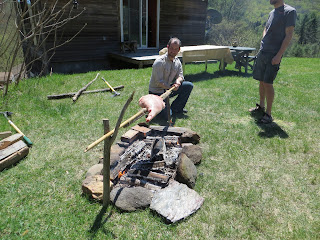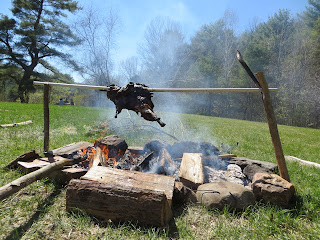Following our Game of Thrones themed birthday party, we had an insane amount of leftovers. The small amount of lamb still leftover two weeks later was easily dispatched by our dogs (they liked it almost as much as when they got to devour blue cheese filet mignon last week -- yeah, these dogs are ridiculously spoiled). The only thing left was a bit of rabbit stew. Super delicious and made by my mom -- who will perhaps post a recipe here one day?!
So today I finally got off my butt and decided to use our leftovers for good! And hence rabbit muffins. Or... Stew scone? Bunny bread? Carcass cupcake? Yeesh, okay, I'll stick with mini meat pies.
Ingredients
Leftovers
Pie crust
Pie Crust
[For 12 mini pies.]
2 cups flour
2/3 cup shortening
1 tsp salt
~1/2 cup cold water
Procedure
Mix flour, salt, and shortening together using a pastry blender until you have a fairly homogenous crumbly mixture. Add in water, a little bit at a time, and stir with a wooden spoon until the dough forms a ball. Roll it out (depending on your work surface, you may want to roll out half of it at a time) pretty thin line the bottoms of a greased muffin tin. Spoon in your leftover filling (any thick stew would work, as would anything that's not too runny).
Cover the filling with another layer of dough, crimp the edges with a fork, and glaze with a bit of egg wash. Bake at 425F for about 15-20 minutes, or until the pie is slightly golden on top.
When you're splitting up the dough into the muffin cups, neatness is not very important. Just rip out a portion roughly large enough to go into the cup and stick out a over the sides. Same for the top. All that matters is you can crimp the edges to seal in the meaty goodness.
* Dog approved!
(Taken with a pie held over the camera. Don't feel bad, he got to eat it after.)
Storage/Leftovers
These will not be great re-heated, so only make the amount you plan to eat. Remaining uncooked dough can be frozen.
.jpg)
.jpg)
.jpg)


















